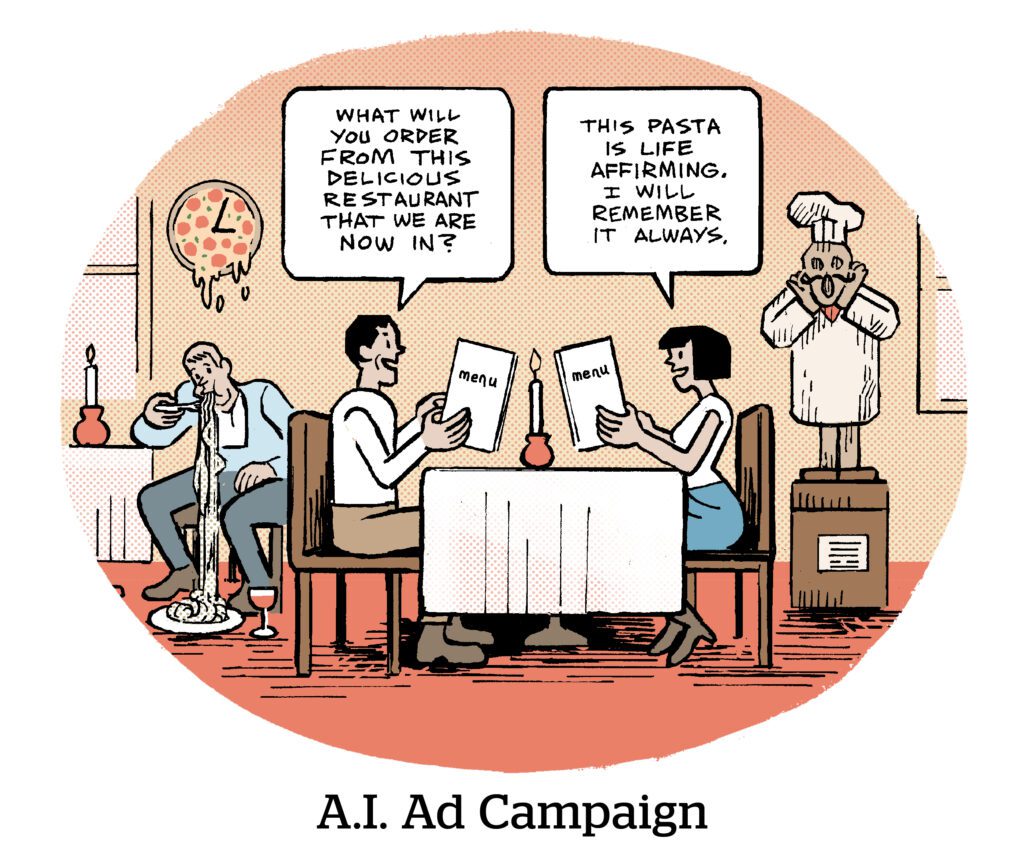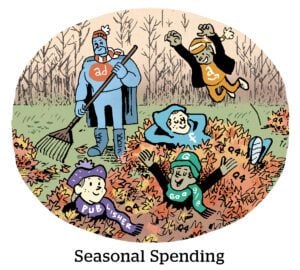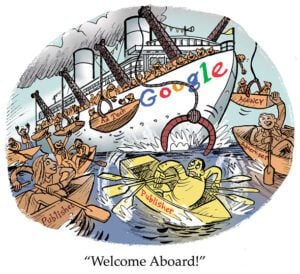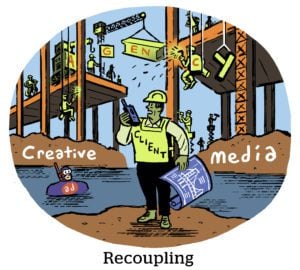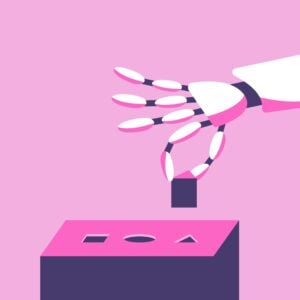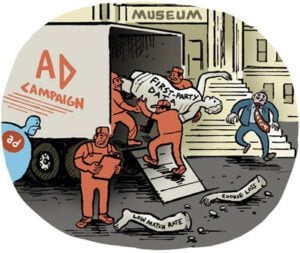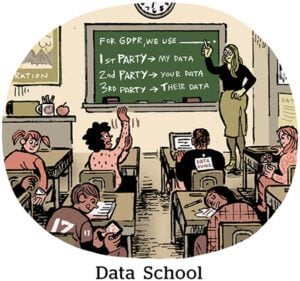If personalization is good, then hyper-personalization is better and AI-powered personalization is best.
Right?
As marketers know, brands need to build a relationship with the customer so personalization feels appropriate. And the customer has to benefit from the personalization, whether through monetary discounts, convenience or useful advice.
“Companies have to earn the right to personalize ads,” said Eli Stein, a partner at McKinsey & Company.
While brands have long used machine learning to generate thousands of customized variations of retargeting ads and copy tweaks, personalization powered by generative AI is creating new challenges for brands. For instance, generative AI tools can theoretically generate thousands of complex variations of creative in a day. AI can also tailor creative copy or suggest products based on individual preferences and behavior, which consumers may find off-putting – either because the personalization attempts are off-base or because they are uncannily accurate.
From the trenches, here are examples of personalization at both extremes. Because without the perceived brand relationship or value, personalization can come across as intrusive and unnerving.
Caring is creepy – if you’re an ad
Seizing on “intimate life events” as opportunities to personalize ads is one way that companies can go astray, Stein said.
For instance, when he and his wife were expecting a child last October, he saw ads related to new babies all over his social media, even though he hadn’t shared the news online. Perhaps an AI model, which has the capacity to scan vast troves of data and pick out patterns invisible to humans, was responsible.
Those targeted ads were an example of “passive” personalization. Passive personalization collects customer data “whether [customers] know it or not” and uses it to communicate with customers, said Dave DiCamillo, CTO of Stagwell-owned digital creative agency Code and Theory.
In contrast, active personalization happens when customers fill out a profile and are aware the company will “tune things for you” based on purchases and profile information.
The creepy factor is only “continuing to accelerate” for AI-enabled personalization, DiCamillo said. “We are taking assumptions about you and trying to use the AI to take logical next steps about where you want to be.”
Mistakes were made
The problem with those assumptions is they can be wildly inaccurate.
Data is fallible and doesn’t provide a “true understanding” of what users are thinking and feeling, said Jasper Pye, CTO of UK-based SaaS platform Phrasee. When brands have invalid data, don’t use the data properly or make big assumptions based on small amounts of interaction data, “that experience can be way worse than if you targeted me with a generic ad campaign,” he added.
For example, when Pye went on holiday to Portugal a couple of years ago, he bought a travel guide from a company he was on the mailing list for. Two years later, the company continued to hammer him with ads for Portuguese travel guides – a glaring instance of using data improperly.
“Most companies are not big enough and don’t have enough data to truly personalize,” said Magnus Revang, chief product officer at conversational AI company Openstream.ai. That might explain why Revang saw a product recommendation for adult diapers on Amazon upon turning 45.
“You must always consider the downside of being wrong” about personalization, he said.
Adding to the risks swirling around ad personalization is that, with generative AI, there’s virtually no limit to the quantity of personalized product recommendations and personalized versions of their ad creative brands can churn out. Previously, testing personalized creative entailed a “controlled, slow burn” over months or years, DiCamillo said.
The scale that generative AI tools enable is “so massive it’s almost backfiring in its effectiveness,” he said. It’s impossible to validate thousands of tests a day and determine which creative is working. Everything just becomes noise. And there’s a good chance of a mismatch between the targeted person and the personalized content they see with that level of automation.
Watch it
Yet for all of AI-enabled personalization’s risks, it also has its advantages. Done right, it can make a customer feel seen – in a good way.
AI technology allows a company to create the 1,000 versions of an email it always wanted but couldn’t make happen because of human constraints, Stein said. (Of course, a human reviewer has to be in the loop, ensuring that all’s well from a legal compliance and brand voice perspective, he said.)
No company wants to ship subtly misleading AI-generated copy that misrepresents credit card benefits, Stein said, to name a particular sensitive example.
Companies should also establish guidelines for AI use rather than, for instance, creating a million versions of an email just because they can. He also recommends a “robust customer feedback loop” via customer councils or frequent qualitative and quantitative research.
As for how to know when you’ve gone too far with AI-based personalization, dropping engagement rates and higher unsubscribe rates are the “first and most obvious” indicators, Stein said.
AI can anticipate the needs of others
The “true promise of AI” lies in its predictive abilities, its “anticipatory approach to personalizing experiences” in places like brand-owned websites and native applications, DiCamillo said.
Brands should also think beyond advertising for personalization. Some of the most effective ways a brand can personalize – with the greatest returns for the brand’s reputation – are through the customer experience.
Take hotels. Currently, certain high-end luxury hotels keep portfolios on their guests, but in the future, AI tools will allow all hotels to anticipate guest needs in brand-beneficial ways, he said. Thanks to AI, hotels will know that “last time you came, you asked for extra pillows,” or that “you travel with your kid and want a cot in the room.”
But regardless of how and where they choose to personalize, companies must have a compelling reason to do so. “There are brands that have done it really well,” said Daniel Andersson, chief creative officer of IPG-owned branding agency FutureBrand. Conversely, “there are brands that have lost their way.”
A few years ago, for instance, Coca-Cola’s personalized Coke cans with people’s names on them embodied wasteful overconsumption. Who needs a Coke can with their name on it? Besides, the object doesn’t add meaning to the experience of drinking Coke, Andersson said. Porsche’s custom paint jobs in the color of the customer’s choice, on the other hand, builds “a powerful emotional connection” between the consumer and the brand, he said.
Surprise me
Ostensibly, AI tools can help foster that connection. But it’s not guaranteed.
“I’ve seen this time and again with our customers,” Phrasee’s Pye said. Phrasee works with brands that send out a mix of generic one-shot campaigns and targeted campaigns to email subscribers. When the results come back, one type of campaign consistently comes out on top: the generic ones.
Sometimes, buyers want inspiration and guidance, according to Pye. Instead of promoting items based on what people have looked at, brands can nudge them toward something new.
“As humans, we’re inherently random in the way we behave,” Pye said. “I don’t necessarily open an email because it’s been specifically tailored to my interests. I open it because, on that day, it happened to pique my curiosity.”
Sometimes, the best approach isn’t personalization; it’s the opposite.

